International Journal of Radiology and Radiation Oncology
Adenoid Cystic Carcinoma of the Maxilla, CT Follow-Up: A Case Report
Bruno Vieira Caputo1*, Gilberto Araujo Noro Filho1, Claudio Costa2, Artur Aburad de Carvalhosa3 and Elcio Magdalena Giovani4
2Stomatology Department, Dental School, University of São Paulo, São Paulo, SP, Brazil
3Department of Oral Pathology, School of Dentistry, University of Cuiabá. And Coordinator, Department of Oral Pathology in Hospital of Cancer, Cuiabá, MT, Brazil
4Chairman, Professor in Integrated Clinic Discipline, Coordinator of Center for Study and Care of Special Patients (CEAPE). Professor in Postgraduate Dentistry Courses, Paulista University (Unip), São Paulo, SP, Brazil
Cite this as
Caputo BV, Noro Filho GA, Costa C, de Carvalhosa AA, Giovani EM (2017) Adenoid Cystic Carcinoma of the Maxilla, CT Follow-Up: A Case Report. Int J Radiol Radiat Oncol 3(1): 001-003. DOI: 10.17352/ijrro.000019Background: Intraoral adenoid cystic carcinoma is an uncommon pathology with a variable clinical course, it develops as a slow growing swelling characterized by wide local infiltration. Most patients are in their fourth and sixth decades of life, and females are slightly more affected than males.
Case report: An 46-years-old woman was seen at University Hospital of Cuiabá with strong pain in the upper edge of the right side region. Patient reported being subjected to tooth extraction in the area where the pain was equivalent to 4 years, and in intraoral examination revealed an increase in volume of the region of the right side palate. The patient was submitted to the radical surgery promoting the removal of the lesion in the areas of the right maxilla, maxillary sinus and floor of the right orbit. The diagnosis was adenoid cystic carcinoma and after one year of follow-up the patient showed no presence of recurrences.
Introduction
Intraoral adenoid cystic carcinoma (ACC) is an uncommon pathology with a variable clinical course. Due to lack of high-quality evidence, optimal treatment continues to evolve over time [1]. This rare epithelioid head and neck tumor accounting for about 7.5% of all salivary gland malignancies [2] and in the oral cavity this entity comprises only 6.3–10.2% of all minor salivary gland tumors [3]. ACC is originating from ductal cells and myoepithelial cells from intercalated ducts. Most lesions are located in the parotid glands, submandibular and accessory salivary and are rare in the sublingual [4]. Generally, it develops as a slow growing swelling characterized by wide local infiltration. It can be followed by pain, due to the trend for perineural invasion. Loco-regional lymphatic disease is uncommon; late distant metastases and local recurrences are relatively common. Most ACC patients are in their fourth and sixth decades of life, and females are slightly more affected than males [5-8].
Surgical resection with clear margins is currently considered as the standard of care for a vast majority of patients with minor salivary gland tumors including ACCs [1,5].
The most important factors influencing the prognosis are the clinical staging of the tumor and the surgical margins status, whereas the cervical lymph node involvement is a significant predictive factor for mortality due to tumor disease. Between these prognostic specific survival factors only surgical margin status independently influences loco-regional control and disease [6].
Case Report
A 46-years-old woman (Figure 1A) was seen at University Hospital of Cuiabá (Mato Grosso, Brazil) with strong pain in the upper edge of the right side region. The patient reported being subjected to tooth extraction in the area where the pain was equivalent to 4 years, and in intraoral examination revealed an increase in volume of the region of the right side palate (Figure 1B), where she reported pain symptoms at 3 years and exacerbating over time, carried by trigeminal neuralgia.
At the panoramic radiograph (Figure 2) proved to be an extensive bone thinning, measuring approximately 7 cm with poorly defined borders, with expansion and destruction of the floor of the maxillary sinus and nasal cavity on the right; near the floor of the medial orbit, indicating the presence of trabecular bone uneven (in many senses) compatible with the differential diagnosis of infiltrative carcinoma and / or osteoma. The patient was submitted to the radical surgery (Figure 3A) promoting the removal of the lesion in the areas of the right maxilla, maxillary sinus and floor of the right orbit. The material was sent for histopathological examination (Figure 3B). Haematoxylin and eosin–stained sections revealed an ectodermal tumor fragments, originating in the salivary gland, constituted by parenchyma solid and / or cribriform, formed by two cell types, represented by neoplastic ductal epithelial cells and neoplastic myoepithelial cells, followed by formation of numerous structures ductiformes and necrotic areas, complementing the histopathological (Figure 3C,3D). The diagnosis was adenoid cystic carcinoma. Radiotherapy was performed after surgical removal. After 3 months of surgical removal of the lesion, the patient was without suture marks (Figure 4A), and to close the surgical cavity was made an acrylic resin plate with the objective to improve the oral health of the patient (Figure 4B). A year later the patient was submitted to a maxillofacial computed tomography (CT) to follow-up the case (Figure 5).
Discussion
According to the literature [1,6] and in this report adenoid cystic carcinoma occurs in most cases in the fourth and sixth decade of life and is slightly more common in women than in men. Salivary gland tumors rarely develop within maxillary and mandibular bony tissue [9]. The present study confirms previous reports [6,10-12] the palatal mucosal glands are more frequently involved than any other group of intraoral minor salivary glands. Kim et al. [13], have also reported frequent occurrence of ACC in minor salivary glands of the nose and paranasal sinuses. Surgery was the prime treatment to Adenoid cystic carcinoma like in the others studies [1,5,6,8,12]. However, it is often difficult to obtain a complete resection because of vascular invasion and perineural infiltration [8].
Adjuvant radiotherapy was administered to those patients with positive or close resection margins, advanced-stage disease, deep infiltration (of bone, cartilage or deep muscle) or lymph node metastases [6,12]. Postoperative radiation therapy enhances local and regional control in ACC [8]. This use though somewhat controversial is increasing over time. PNI, primary site, and T-stage significantly impact upon local control and disease-free survival. Larger prospective studies with mature follow-up are needed to define the optimal treatment of ACC of the head and neck [1]. In our report we did not administered radiotherapy as adjuvant treatment to the patient, and in the follow-up showed no tumor recurrence.
Regarding to modalities (surgery and radiotherapy) of treatment, combined treatment is more often recommended than surgery alone, especially when negative prognostic factors exist, but some studies demonstrated no difference between combined treatment and surgery only [5,12,14] showed that radiotherapy as well as chemotherapy did not influence overall survival significantly and complements that radiation should be therefore used for patients with higher stages or additional bad prognostic factors and as a therapeutic tool for patients with recurrence as used in this study.
In summary, this report presents a recent case of a woman with adenoid cystic carcinoma in the palate region, and using surgical removal as the only treatment, the patient after 1 year of follow-up with CT showed no presence of recurrences. And the making of the acrylic resin plate was of great importance to assist in improving the oral health and quality of life of the patient.
We wish to thank the Coordenação de Aperfeiçoamento de Pessoal de Nível Superior - Programa de Suporte à Pós-Graduação de Instituições de Ensino Particulares (CAPES-PROSUP) for the support given to this work.
- Agarwal JP, Jain S, Gupta T, Tiwari M, Laskar SG, et al. (2008) Intraoral adenoid cystic carcinoma: Prognostic factors and outcome. Oral Oncol 44: 986-993. Link: https://goo.gl/4xs7tR
- Spiro RH, Huvos AG, Strong EW (1974) Adenoid cystic carcinoma of salivary origin. A clinicopathologic study of 242 cases. Am J Surg 128: 512-520. Link: https://goo.gl/Z0rMGZ
- Yih WY, Kratochvil FJ, Stewart JC (2005) Intraoral minor salivary gland neoplasms: review of 213 cases. J Oral Maxillofac Surg 63: 805-810. Link: https://goo.gl/vjaqQU
- Jones DCE, Baiton R (1990) Adenoid cystic carcinoma of the palate in a 9-year-old boy. Oral Surg Oral Med Oral Pathol 69: 483-486. Link: https://goo.gl/nCG56p
- Kokemueller H, Eckardt A, Brachvogel P, Hausamen JE (2004) Adenoid cystic carcinoma of the head and neck - a 20 years’ experience. Int J Oral Maxillofac Surg 33: 25-31. Link: https://goo.gl/4QcHKq
- Bianchi B, Copelli C, Cocchi R, Ferrari S, Pederneschi N, et al. (2008) Adenoid cystic carcinoma of intraoral minor salivary glands. Oral Oncol 44: 1026-1031. Link: https://goo.gl/wSZ4gu
- García de Marcos JA, Calderón-Polanco J, Poblet E (2008) Primary Adenoid Cystic Carcinoma of the Mandible: Case Report and Review of the Literature. J Oral Maxillofac Surg 66: 2609-2615. Link: https://goo.gl/QwcsJT
- Mano T, Wada N, Uchida K, Muraki Y, Nagatsuka H, et al. (2010) Central Adenoid Cystic Carcinoma of the Mandible With Multiple Bone Metastases: Case Report. J Oral Maxillofac Surg 68: 446-451. Link: https://goo.gl/b2DKdk
- Cleveland D, Abrams AM, Melrose RJ, Handlers J (1990) Solid adenoid cystic carcinoma of the maxilla.Oral Surg Oral Med Oral Pathol 69: 470-478. Link: https://goo.gl/6PSjzR
- Darling MR, Schneider JW, Phillips VM (2002) Polymorphous lowgrade adenocarcinoma and adenoid cystic carcinoma: A review and comparison of immunohistochemical markers. Oral Oncol 38: 641-645. Link: https://goo.gl/kRcYP5
- Triantafillidou K, Dimitrakopoulos J, Iordanidis F (2006) Management of Adenoid Cystic Carcinoma of Minor Salivary Glands. J Oral Maxillofac Surg 64: 1114-1120. Link: https://goo.gl/xCh132
- Mücke T, Tannapfel A, Kesting MR, Wagenpfeil S, Robitzky LK, et al. (2010) Adenoid cystic carcinomas of minor salivary glands. Auris Nasus Larynx 37: 615-620. Link: https://goo.gl/vk4rkG
- Kim KH, Sung MW, Chung PS, Rhee CS, Park CI, et al. (1994) Adenoid cystic carcinoma of the head and neck. Arch Otolaryngol Head Neck Surg 120: 721-726. Link: https://goo.gl/Bfa8hw
- Khan AJ, DiGiovanna MP, Ross DA, Sasaki CT, Carter D, et al. (2001) Adenoid cystic carcinoma: a retrospective clinical review. Int J Cancer 96: 149-158. Link: https://goo.gl/GTuZYj
Article Alerts
Subscribe to our articles alerts and stay tuned.
 This work is licensed under a Creative Commons Attribution 4.0 International License.
This work is licensed under a Creative Commons Attribution 4.0 International License.
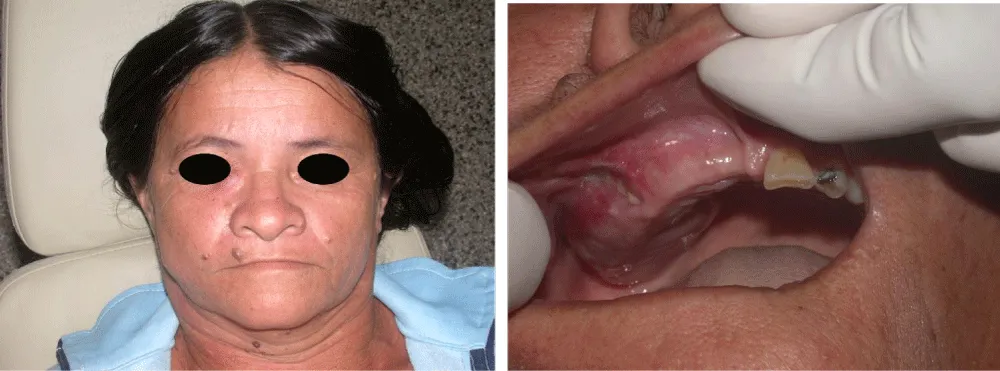
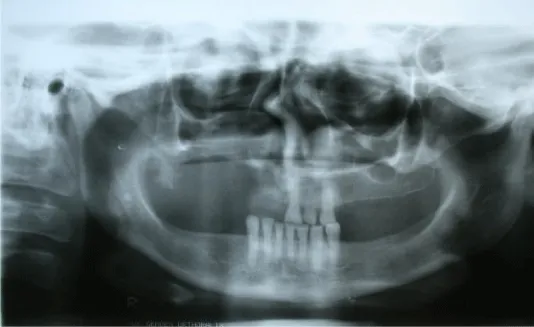
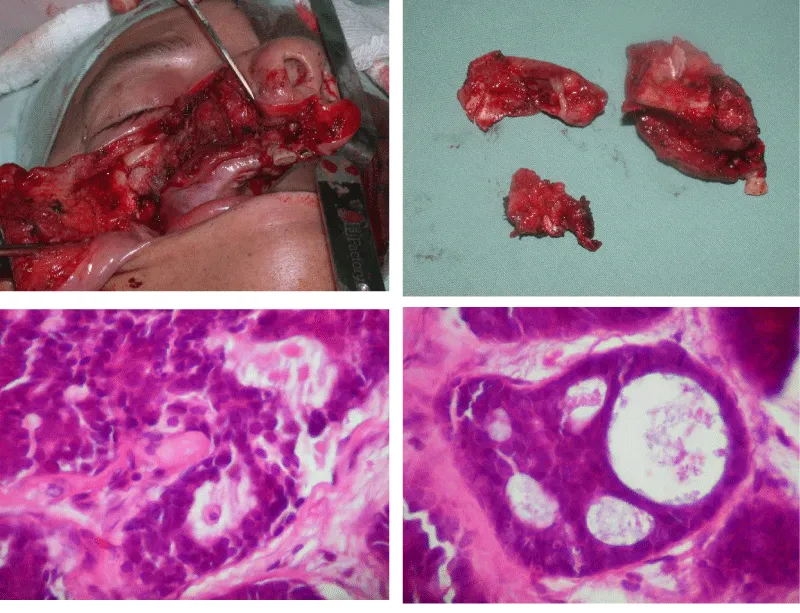
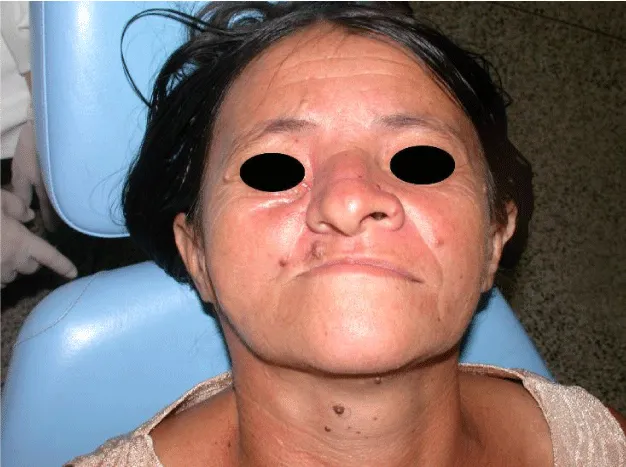
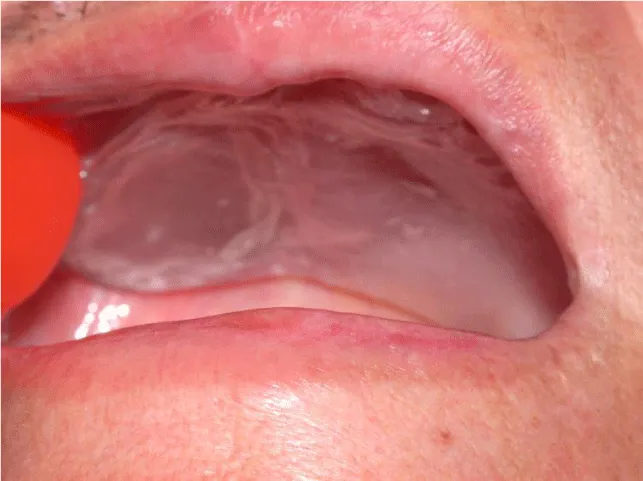
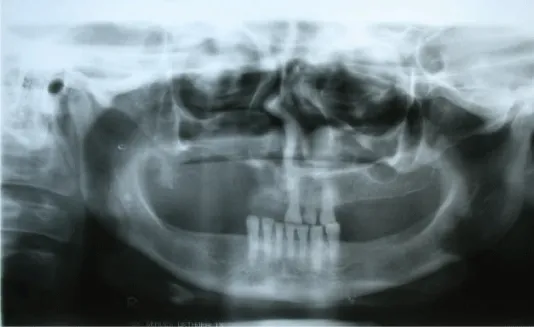
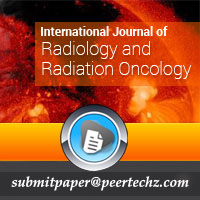
 Save to Mendeley
Save to Mendeley
